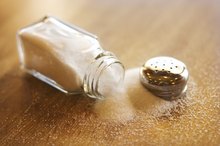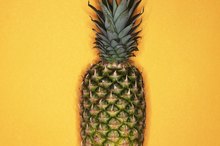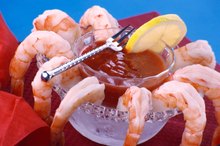What does fact checked mean?
At Healthfully, we strive to deliver objective content that is accurate and up-to-date. Our team periodically reviews articles in order to ensure content quality. The sources cited below consist of evidence from peer-reviewed journals, prominent medical organizations, academic associations, and government data.
- Journal of Toxicology, Clinical Toxicology: Nickel; Barceloux DG;1999
- Journal of Toxicology, Clinical Toxicology: Nickel; Barceloux DG;1999
The information contained on this site is for informational purposes only, and should not be used as a substitute for the advice of a professional health care provider. Please check with the appropriate physician regarding health questions and concerns. Although we strive to deliver accurate and up-to-date information, no guarantee to that effect is made.
Sources of Nickel in Your Diet
Animal studies suggest that the trace element nickel is involved in a number of important biological functions, including production of the hormones prolactin and aldosterone; maintaining the integrity of lipid and cell membranes; and stabilizing DNA and RNA, according to Andrew Weil, M.D 1. Low levels of nickel occur in people with liver or kidney disease. High levels of nickel occur in people with heart disease, thyroid disease and cancer, according to the Mineral Information Institute.
Foods High in Nickel
The major source of nickel in the diet comes from plants, which supply about 900 mcg daily of nickel. Dry beans, cocoa, baking soda, and nuts, including hazel nuts, almonds and pistachios contain high levels of nickel, or greater than 2.0 mcg/g, according to "The Journal of Nutrition." In Europe, nickel serves as a catalyst to harden margarine. Consequently, this food contains high amounts of nickel.
- The major source of nickel in the diet comes from plants, which supply about 900 mcg daily of nickel.
Foods With Moderate Nickel
Low-Nickel Diet Plan
Learn More
Mushrooms, barley, rye, oysters, processed meats, raspberries and many vegetables contain intermediate levels of nickel, or 0.2- 2.0 mcg/g. Humans need 25 to 35 mcg of nickel per day, according to the U.S. Department of Agriculture's Agricultural Research Service 3. Average nickel intake in the United States is 300 mcg daily, according to the "Journal of Toxicology, Clinical Toxicology. 2"
Foods With Low Nickel
Beer, tea, coffee, apricots, whole and dried milk, fresh fruits, meat, fish and Coca Cola contain low levels of nickel, or less than 0.2 ng/g.
Metal
What Food Allergies Cause Under Eye Circles?
Learn More
Canned fruit contains higher amounts of nickel than fresh fruit. This occurs due to fruit reacting with tin, which releases nickel. In addition, during cooking, oxalic acid in some foods attacks stainless steel skillets releasing nickel. Good quality stainless leaches these ingredients less than poor quality.
- Canned fruit contains higher amounts of nickel than fresh fruit.
- In addition, during cooking, oxalic acid in some foods attacks stainless steel skillets releasing nickel.
Related Articles
References
- Andrew Weil, M.D. : Getting Enough Nickel?
- Journal of Toxicology, Clinical Toxicology: Nickel; Barceloux DG;1999
- U.S. Department of Agriculture's Agricultural Research Service
- Beltrani VS, Bernstein IL, Cohen DE, Fonacier L. Contact Dermatitis: A Practice Parameter. Ann Allergy Asthma Immunol. 2006;97:S1-38.
Writer Bio
Based in New Jersey, John Riefler has been writing since 1987. His articles have appeared in "MD Magazine," "Emergency Medicine" and "Hospital Practice." Riefler holds a Bachelor of Science in biology from Bucknell University, a Master of Science in microbiology from the Medical University of South Carolina and a medical doctorate from St. George's University School of Medicine.









